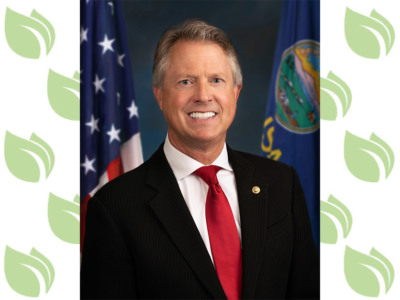There is a great deal to discuss surrounding the inflation that is ripping through America. However, few people are focused on what inflation means to farmers and those who benefit most from a bountiful harvest: the hungry, those that live in poverty, as well as the food stamp budget and USAID budget.
It’s no secret farmers are faced with a fertilizer crisis. Prices for phosphorus-based and potassium-based (potash) fertilizers have more than doubled in Kansas while Nitrogen-based fertilizers have more than quadrupled. Fertilizer is vital to feeding not only the country, but the world. It contains essential nutrients for plant life, and without it, American agricultural yields will quickly suffer as well as food prices in local grocery stores.
There are three main types of fertilizer, nitrogen, phosphorus, and potassium. Depending on the crop and soil, a farmer may need one or all three types. Nitrogen fertilizers like Anhydrous Ammonia are made by mixing nitrogen in the air with the hydrogen from natural gas at high temperatures. Sixty percent of the natural gas is used as the ingredient while 40% is used as the energy source. Phosphorus and potash fertilizers are made from mostly imported mined rock, which then go through a chemical process to create several different compounds.
The US only makes up for 10% of global fertilizer use, despite producing 35% of its corn and soybeans. Even with our efficiency we are a major importer of fertilizer therefore our market price is largely driven by global supply and demand. This means both international and domestic issues have a significant impact on our fertilizer prices – all suffer to some extent from supply disruption policies like paying more for people to stay at home than work. This is also complicated by weather disruptions that put a dent in U.S. production of nitrogen.
Sixty percent of total U.S. ammonia production capacity is in Louisiana, Oklahoma, and Texas because of their large reserves of natural gas. Natural gas prices are up more than 150% in North America, and are up around 500% in Europe. Since natural gas makes up 70 percent of production costs for anhydrous ammonia, so follows the price of fertilizer. Many European fertilizer producers have shut down, curtailed operations, or dramatically increased their price. At this rate, Europe will starve themselves before they die from pollution.
At the same time, just like they did with medical supplies during the worst days of the COVID pandemic, China has significantly curtailed its fertilizer exports – a common trick they use to artificially create shortages and raise prices. This means fertilizer producers outside of Europe and China are seeing significantly higher demand, pushing prices upward. The U.S. has countervailing duties on phosphate from Russia and Morocco and several other major global producers are also limiting exports which exacerbate the supply shortage globally.
As global prices rise around the world, the costs of U.S. imports continue to climb. The price of goods produced in the U.S. also increases as local demand competes with foreign demand to keep products in the U.S. – a vicious cycle of a dog chasing its tail, a tail that’s on fire as those on the left continue to borrow and print money like a drunken sailors.
Make no mistake, President Biden’s disastrous policies are equally to blame for the cost of fertilizer in the U.S. His energy policy curtails the production and transport of natural gas and has impacted every facet of production. Moving away from energy independence affects domestic transportation costs. Vaccine mandates limit the labor supply. The extra unemployment dollars kept people at home rather than at work. Extra regulation continues to constrain business. At every step, the president has made a bad situation worse. In a time of crisis you don’t create roadblocks, you get out of the way and let business do what they do best.
Inflation means so much more than just increased fertilizer costs for farmers. The cost of food is up almost 10 percent since 2019, and the fertilizer shortage will increase this even further. Biden-flation is hitting the hungry the hardest. For example, our McGovern-Dole Funding reached 1.3 million people in 2020 and cost taxpayers $215 million. In 2021, we reached 220,000 less people and spent $33 million more. If we want to help people in need the best play is to get inflation under control and to encourage economic growth – not stifle it. Instead of continuing down this path of reckless spending, we need to keep up the pressure to halt vaccine mandates, get our financial house in order, cut back on out-of-touch regulations, and avoid raising taxes.
The unfortunate reality is this is only the beginning. It may take more than a year before the effects felt by fertilizer prices at the farm will also be felt at the fork.
U.S. Senator Roger Marshall, M.D.
For more opinions and ag news, go to: www.agri-pulse.com.


